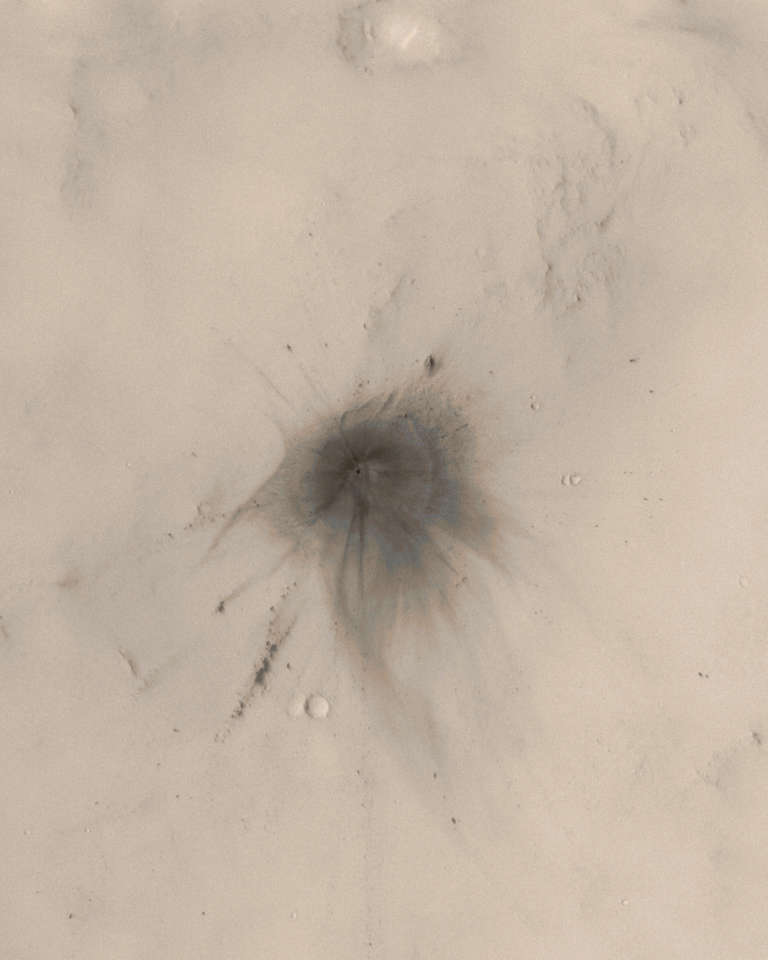Emily Lakdawalla • Sep 15, 2010
Mars As Art
Attention Mars data trawlers! NASA Headquarters is looking for community input on an exhibition and book of "Mars As Art." It's a followup to a similar project they put together in 2006.
After the great reception given the Mars as Art activity coupled to the Viking Anniversary a few years ago, NASA's Mars Exploration Program has decided to create a second "Mars as Art" exhibit timed with the incredible schedule of events in Planetary science next year, including launch of the Agency's newest flagship mission, Mars Science Laboratory! In addition to screensavers, displays on Capitol Hill, etc., this time we plan to also create a traveling museum exhibit and a NASA book, along with a web site. We will also make this an international affair to embrace our new joint Mars Exploration Program with the European Space Agency.

The announcement I received was sent to the community of Mars scientists who form the Mars Program Exploration Analysis Group, but I see no reason why the people who spend hours and hours of their free time exploring the vast data collections of Mars Reconnaissance Orbiter and assembling beautiful mosaics and panoramas of Mars Exploration Rover images shouldn't also nominate their favorite "works" of Mars photo art. The call to action said that individuals can nominate as many images as you like before the deadline of October 8, which could potentially invite abuse; I'd urge people to sit back and imagine the photo hanging on the wall before submitting it. They don't specify a limiting resolution, but if you're going to print things large, you really need multi-Megapixel images, which will limit the options substantially.
To nominate an image, you must first create a user account at the image nomination site. Then you input a URL to the image (or upload it if it is not already available online), give it a title and link to a previously written caption if one exists, input its approximate latitude and longitude (positive east), and then write a rationale for the image selection, both aesthetic and artistic. The call to action included some guidelines:
ACCEPTABLE: Cropped versions of larger images, spectral shifting, false-color images, image mosaics compiled from sub-images, and spectral and or radiometric-calibrated images.
NOT ACCEPTABLE: Restructuring of the image, alteration of the visual scene, addition/subtraction/alteration of scenic elements within the image, and/or stylistic modifications are not acceptable.
If you have a cropped version of larger images or specially processed images that are not easily accessible on-line, please upload the highest resolution version.
One assumes that uploaded images would preferably be submitted in a lossless format such as PNG, but I have not tested the form to see what image formats it accepts, or whether there is a file size limit.
Once the nomination period has closed, they'll review the submissions, and may contact you through the down-selection process (phase 2). Phase 3 includes "PI Approval," which is wise -- it's good to run the images past an expert to make sure there really is no doctoring involved.
I can't wait to see this exhibit!
Let’s Go Beyond The Horizon
Every success in space exploration is the result of the community of space enthusiasts, like you, who believe it is important. You can help usher in the next great era of space exploration with your gift today.
Donate Today

 Explore Worlds
Explore Worlds Find Life
Find Life Defend Earth
Defend Earth

